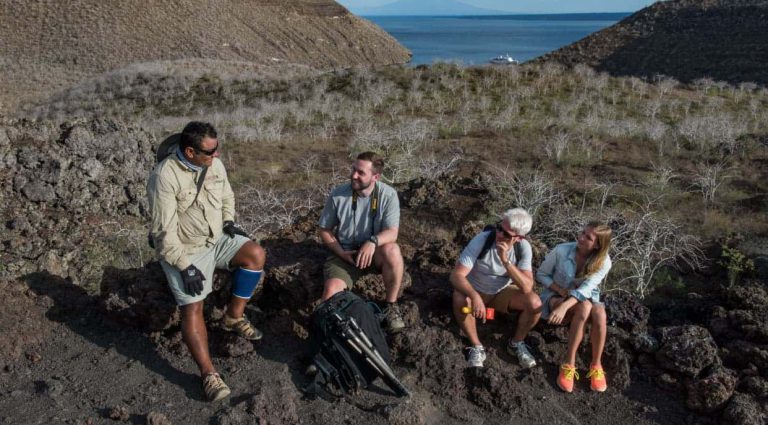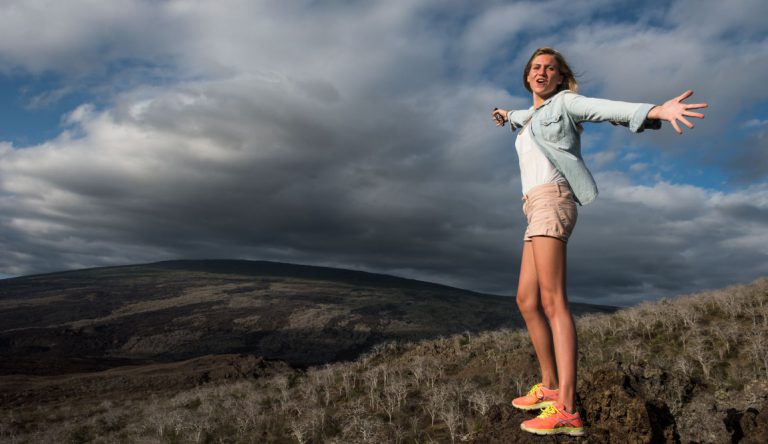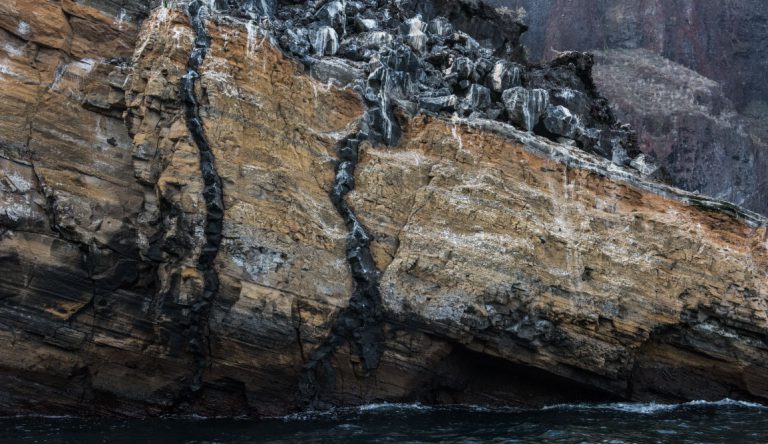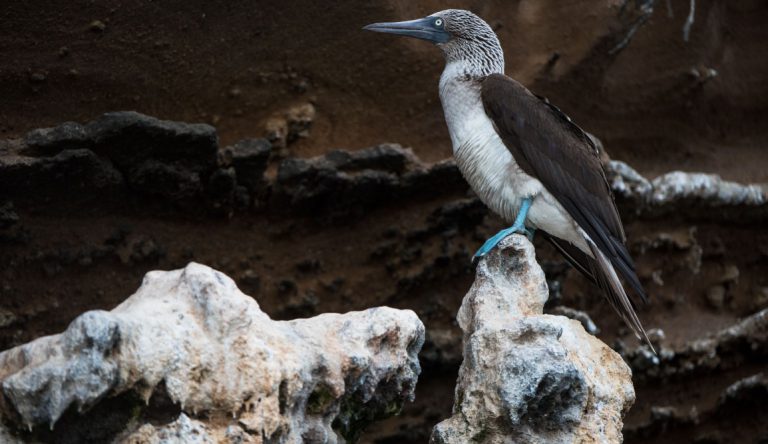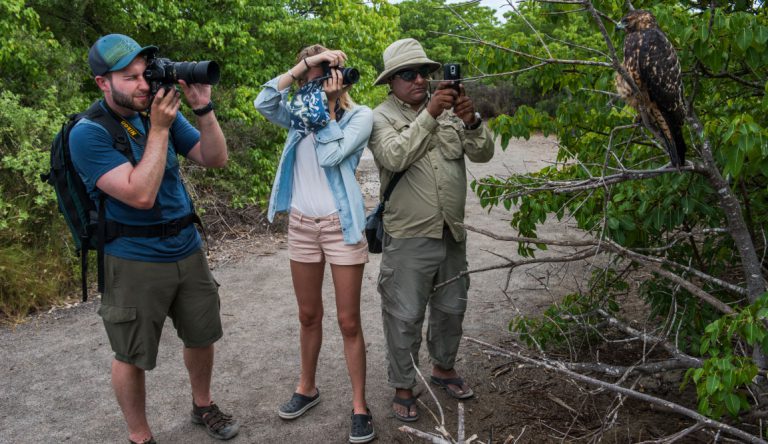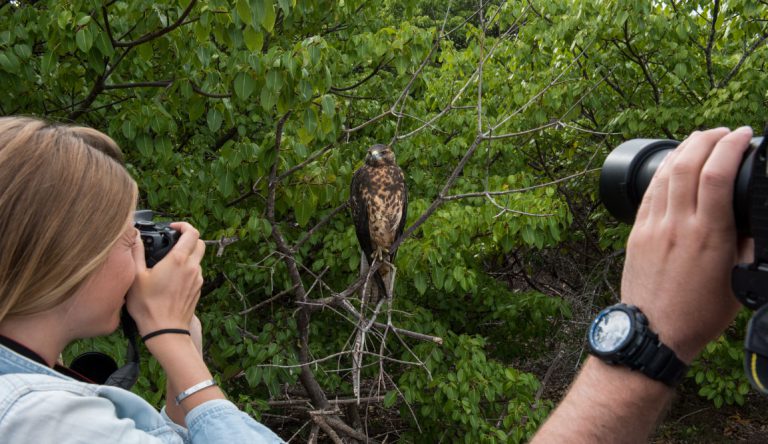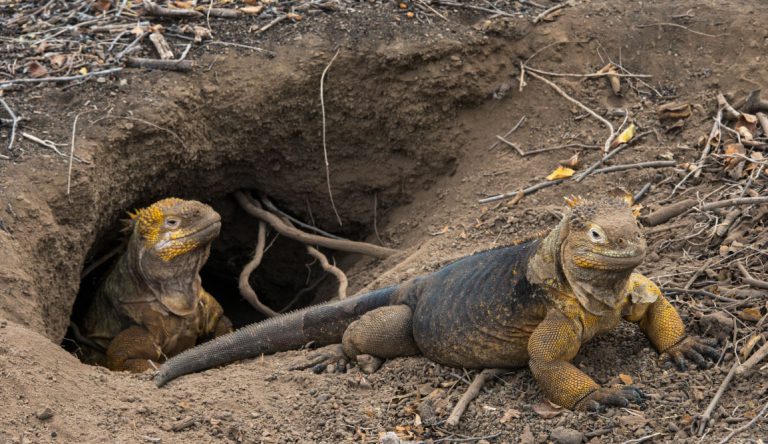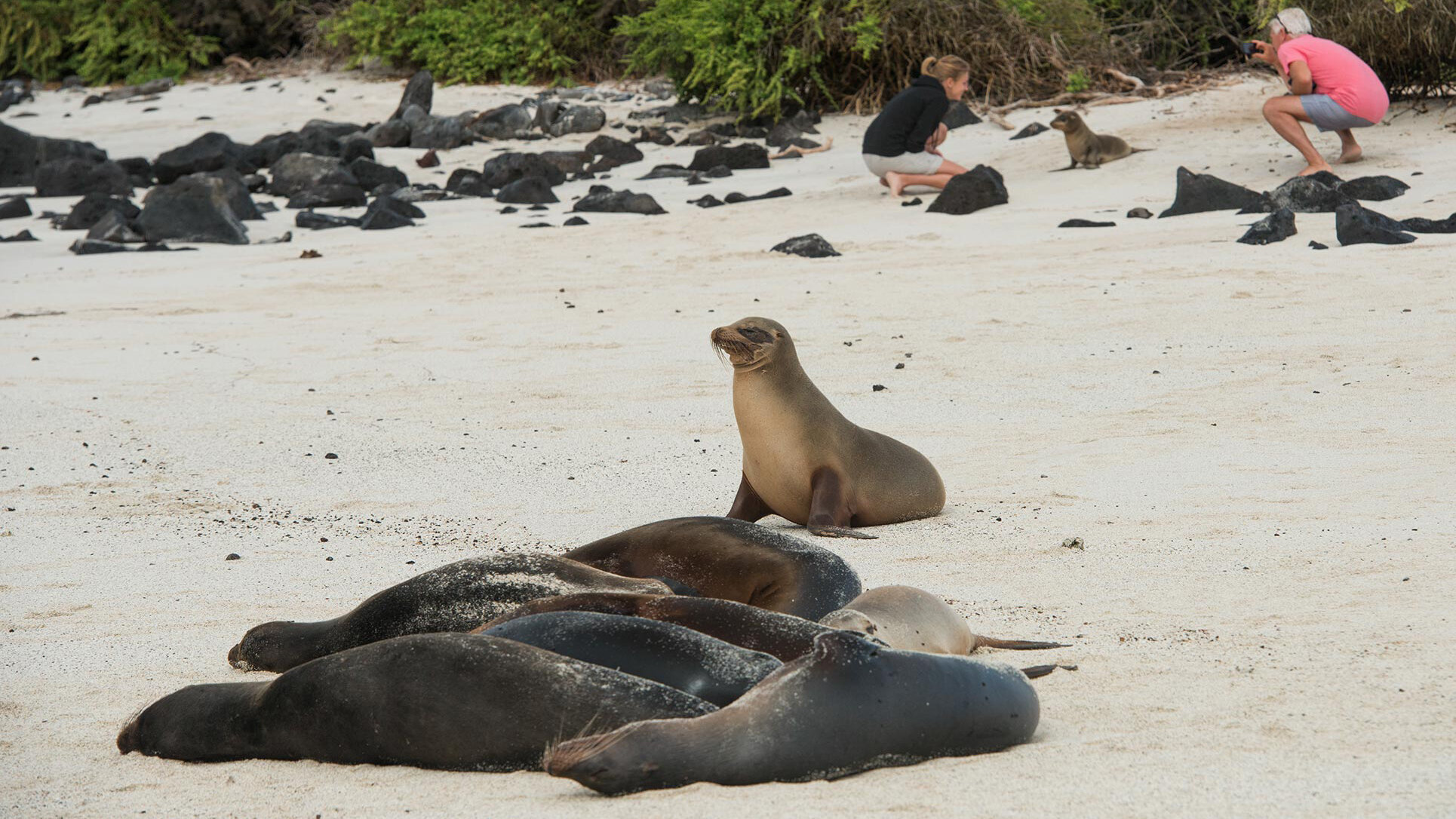
More about Isabela
The largest island of the archipelago and is easily recognized due to its shape that resembles a seahorse. Well known for having the second biggest active crater of the world in Sierra Negra Volcano, is located on the west of the archipelago and has one of the richest marine ecosystems. Isabela together with Fernandina are still located over the hot spot, causing volcanic activity until today, making them the youngest islands of the archipelago. Wolf Volcano had activity just last year giving visitors the chance to see how the islands grow and turn into what we know today.
It was formed into a big island mass by six volcanoes that in the beginning were six different islands, five of which are still active. Each one of them is populated by a different specie of Tortoise that used to live in a separated island.
Home of Penguins, Flightless Cormorants, Marine and Land Iguanas and many Marine Birds, Isabela also portrays the picture of the evolving process that these species went through in all different locations of the same island. Named Albermale by the English colonizers, it offers not only diverse ecosystems but also some of the most amazing landscapes and natural sights of the archipelago.
Small human population in the south of the islands. This is one of the four populated islands; about 2200 people live in Puerto Villamil. This town is the result of almost 300 years of interesting human interactions related to military plans and prison breakouts, and today is a welcoming site to explore and encounter the settlements that can tell the story.
Punta Vicente Roca visitor site is the best place to find the famous flightless cormorant. The evolution process that this specie went through can be observed on his behavior and environment on this location, providing evidence to understand Darwin’s theory of evolution. Located on the north side, the head of the sea horse is a very important marine productive area, hit by the Cromwell Current, offers the most extraordinary marine life so it is considered one of the best diving spots of the archipelago. Whales and sharks are often seen in our visits.
Bahia Urbina visitor site is located on the central west side of the island and is the only place of the archipelago where tortoises have been born and are still there, in other words, they are a natural, untouched population. All other have suffered migrations or problems with introduced species.
Location Map:

Recent Posts
Isabela Island Visitors Sites

Tagus Cove is located on the Northwestern coast of Isabela. It is a historical site visited by Charles Darwin in 1835, where graffiti has been carved into the rock walls by visitors over the past centuries; this happened just before the Galapagos National Park was established in 1959-1960. This cove was a hideout for whalers and pirates, as it is protected by the surf and is also a perfect place to anchor. The name of the site dates back to 1814 when it was visited by a British ship, The Tagus, which had anchored there in search of giant tortoises to be used as food supply on the boat. We will return by the same path for an hour dinghy ride along a shoreline full of marine wildlife. Here, we will admire a variety of seabirds, such as blue-footed booby, brown noddy, terns, flightless cormorant and Galapagos penguins depending on the season. The Galapagos penguins are only 1.4 ft. tall (35 cm) and are the only penguin species in the world living in the northern hemisphere, that is, along the Equator. They are monogamous and lay their eggs in small cracks of lava, on the lower parts of the island near the shoreline not reached by the ocean’s water. The population of penguins on the islands is about 700 pairs, most of which live on the western portion of Isabela; others are cattered further south of the island.
Along theTagus, we can observe sea turtles, eagle, rays, sea lions and, if we’re lucky, dolphins swimming in the vicinity. Here, snorkeling is allowed. Once we leave Tagus Cove, we navigate into the Bolivar Channel for excellent opportunities for whale and dolphin watching.
- Disembarking:
- Type of Terrain:
- Physical Conditions Required:
- Activities: 45 min kayaking / 25 min glass-bottom boat / 1 hour deep snorkeling / 45 min dinghy ride / 45 min hike
- Highlights: Seabirds: Blue-footed boobies, brown noddy terns, flightless cormorant, Galapagos penguin and seasonal marine iguanas. We shall follow Charles Darwin’s trail when the Beagle anchored here in 1835. Excellent snorkeling, kayaking and dinghy ride, lots of seabirds: blue-footed booby, brown noddy, terns, flightless cormorant, Galapagos penguins and marine iguanas depend on the season.
Suggested Items:

Vicente Roca Point has great deep-water snorkeling at one of the richest marine havens on Earth (Bolivar Channel). We take a dinghy ride along the coast to observe a great diversity of sea and coastal birds; Nazca and blue-footed boobies, noddies, brown pelicans, penguins, flightless cormorants. The upwelling of coldwater currents in this part of the Galapagos gives rise to an abundance of marine life.[:es]Este es un sitio espectacular para los visitantes, rodeado de inmensos acantilados del volcán erosionado. Salpicados de aves marinas en reposo, como noddies marrones y piqueros de Nazca, los disfrutaremos muy cerca de nuestros botes. El esnórquel aquí es excelente, con ciertas especies de peces que solo se encuentran en el oeste del archipiélago. También tenemos una posibilidad muy real de nadar con pingüinos y, potencialmente, una gran cantidad de tortugas verdes.
- Disembarking:
- Type of Terrain:
- Physical Conditions Required:
- Activities: 25 min glass-bottom boat / 30 min deep snorkeling / 1-hour dinghy ride
- Highlights: Nesting area for sea turtles, rays & sea birds. One of the richest marine havens, seabirds, marine turtles, sunfish, rays, etc.
Suggested Items:

West of Isabela Island, Urbina Bay is located; it is a fascinating area which is the result of a shallow sea bottom uplifted in 1954 hich shows a large coral reef that sticks up above sea level. Urbina Bay has a wide variety of plant life which changes depending on the season. We can observe the beautiful color of the plants which attracts many different insects. The site also features a short trek inland, where feeding giant tortoises can be spotted amongst the bushes in their natural habitat, as well as land iguanas nest the middle of the trail where their specially textured and yellowish skin can be observed from up close. Flycatchers, Darwin’s finches and mockingbirds are common on the ground and in the trees.
- Disembarking:
- Type of Terrain:
- Physical Conditions Required:
- Activities: 1 hour 45 min hike / 1 hour beach snorkeling
- Highlights: Spectacular view of Alcedo volcano. Along the trail, we will see land iguanas, mockingbirds, finches, Galapagos hawks, Galapagos martins, and occasionally, giant tortoises. At the beach, we will be able to see the largest marine iguanas on the Galapagos, and those who wish to swim or snorkel can approach flightless cormorants, penguins, sea turtles, and assorted colored fish.
Suggested Items:

